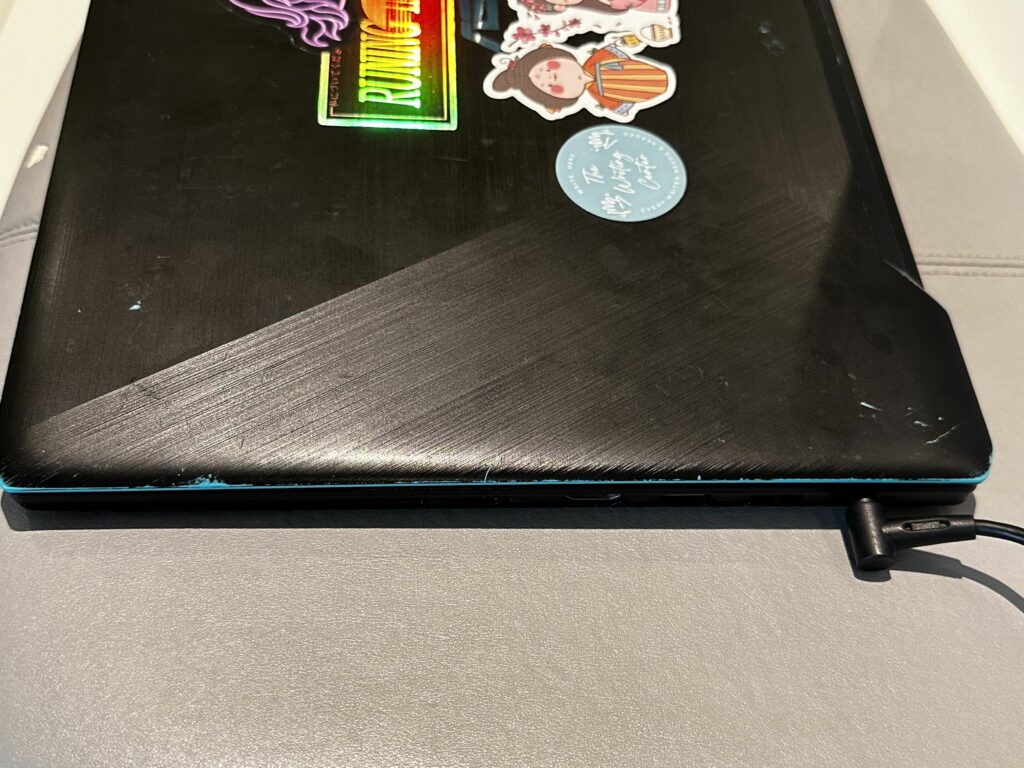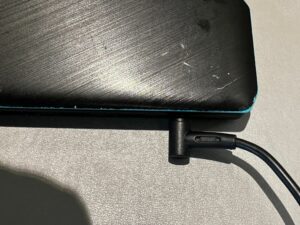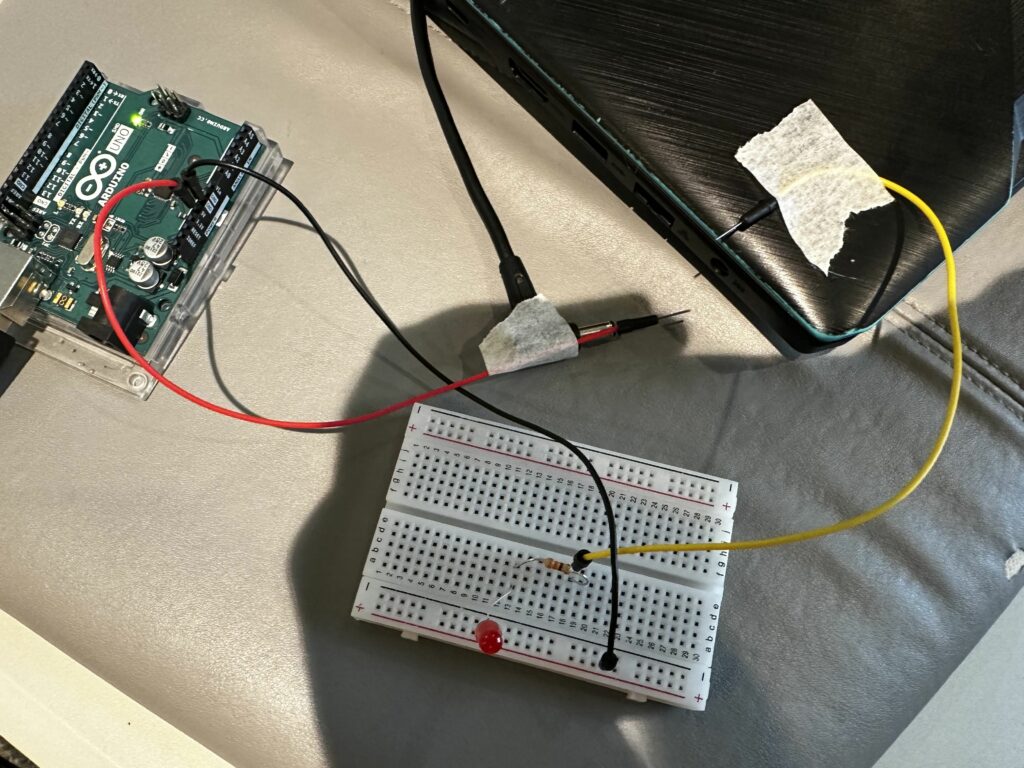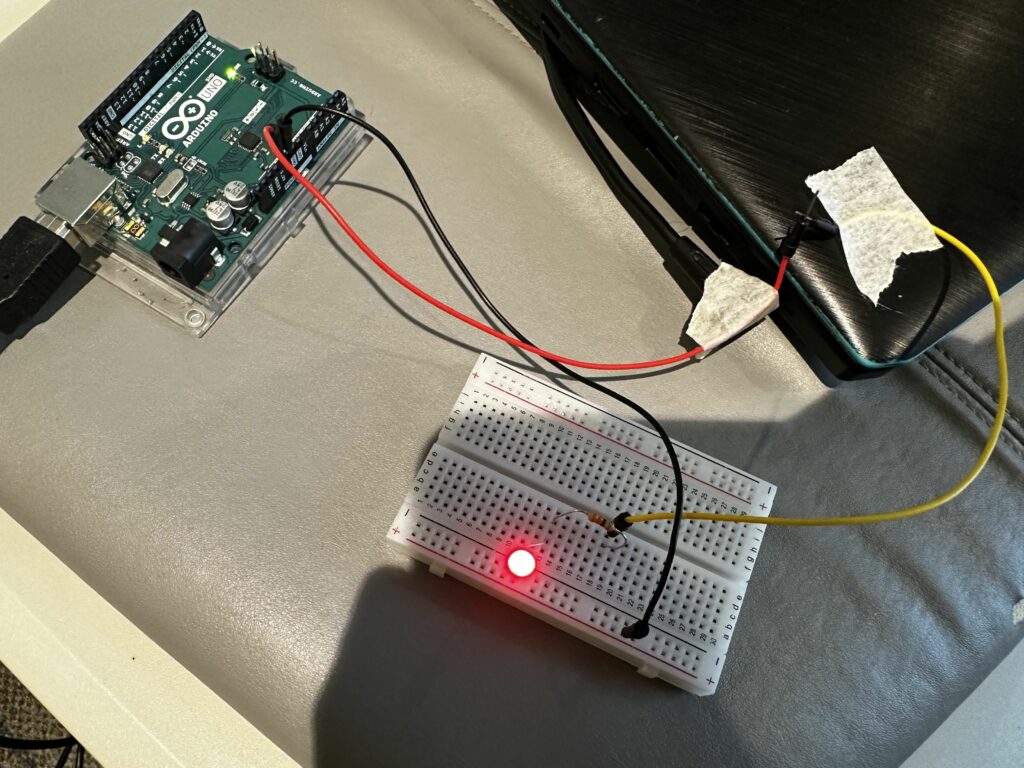Concept: While browsing YouTube for ideas, I noticed that my friend’s old laptop lacks an indicator light for charging. Every time she plugs it in, she’s uncertain if it’s actually charging. So, for my Week 9 project, I’ve decided to help her by using an Arduino to create a simple input/output switch. This will make it easy for her to tell whether her laptop is charging.
 Fig 1: This is laptop we will be using for making a switch.
Fig 1: This is laptop we will be using for making a switch.

Fig 2: A closer look of connection between laptop and charging cable.
So the ultimate goal of this project is to incorporate an LED that will serve as an indicator when the charging plug is connected to the laptop.
Process: First, I built a basic circuit that uses an Arduino to power a breadboard. I included a red led in the circuit to serve as an indicator of whether the circuit is complete. So the red wire is supplying power (+5V from the Arduino) to the longer, positive leg of the LED. The shorter, negative leg of the LED is connected to one end of a resistor. The other end of the resistor is connected back to the Arduino board via the black wire, which completes the circuit to GND (ground), allowing the current to flow. When the circuit is closed, a red led turns on. If the circuit is interrupted or there is a break between two wires, then the red led turns off.
 Fig 3: An Open or Broken Circuit, The Red Led is in “Off” state.
Fig 3: An Open or Broken Circuit, The Red Led is in “Off” state.
 Fig 4: A Closed Circuit, The LED is in “ON” State.
Fig 4: A Closed Circuit, The LED is in “ON” State.
Components I used:
1) Three jumper wires
2) A Red LED
3) Arduino
4) A Resistor
5) A USB Cable for connecting Laptop with Arduino
6) A Breadboard
7) A Tape
Video Demonstration:
Challenges and Future Improvements:
1) Working on this basic circuit board isn’t very challenging for me. However, I find it a bit tricky to attach the wires with tape in such a way that they make a complete connection when the charging cable is plugged in. Getting the angle right for this connection is the challenging part.
2) So for future improvements, I’m considering to use a sensor that can automatically detect whether the cable is connected or disconnected, and do so wirelessly. This would enhance the system’s functionality and user convenience.
